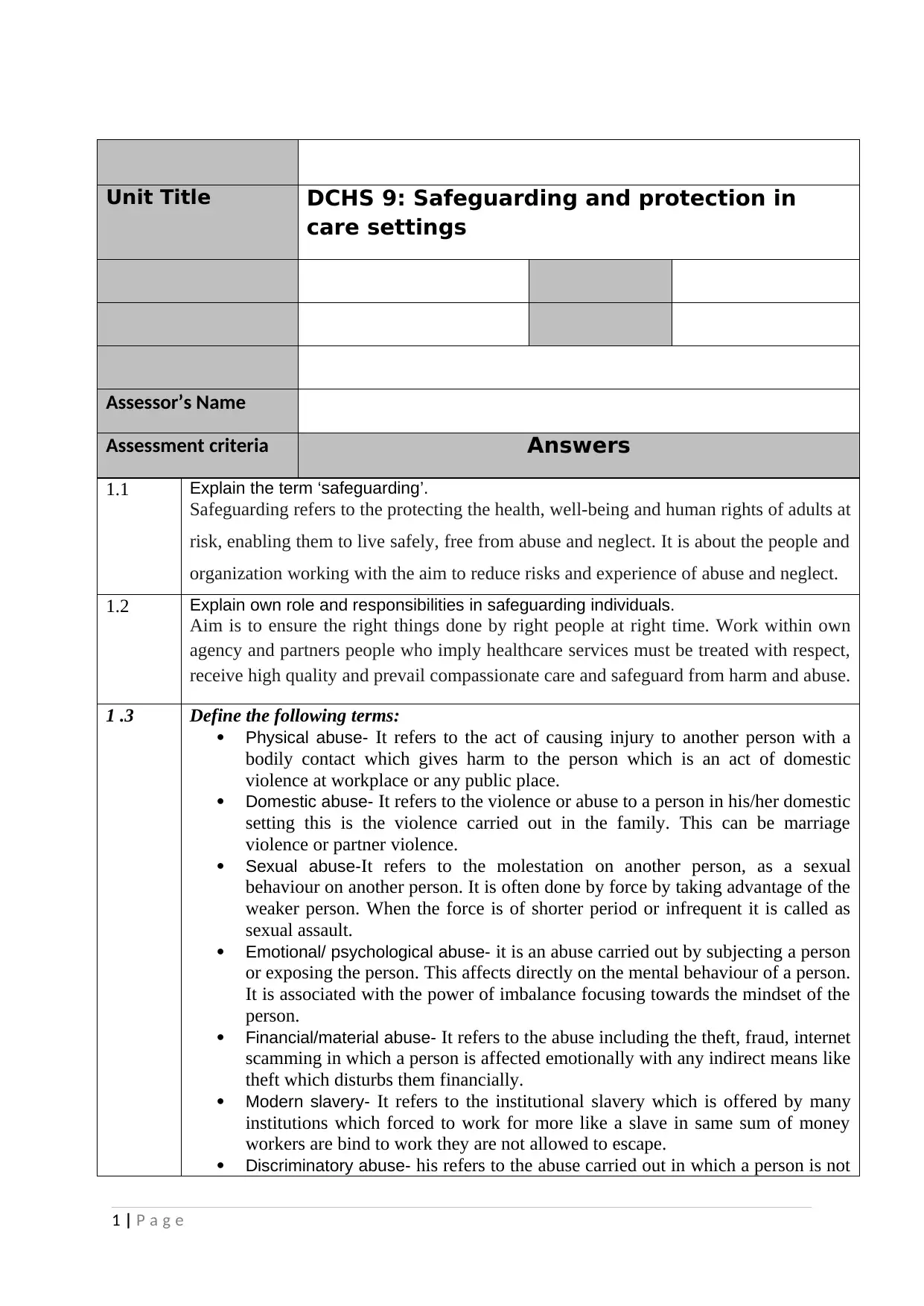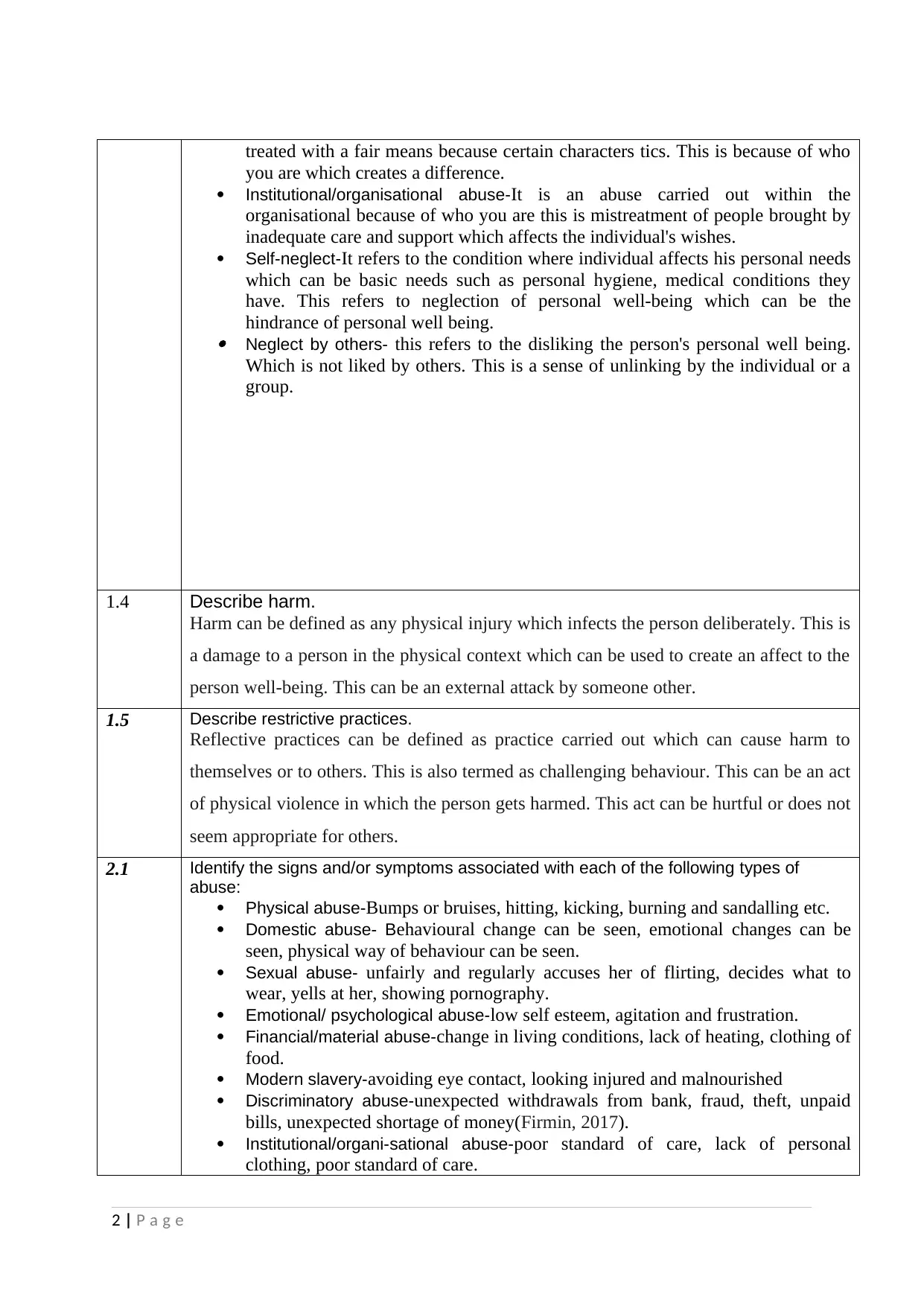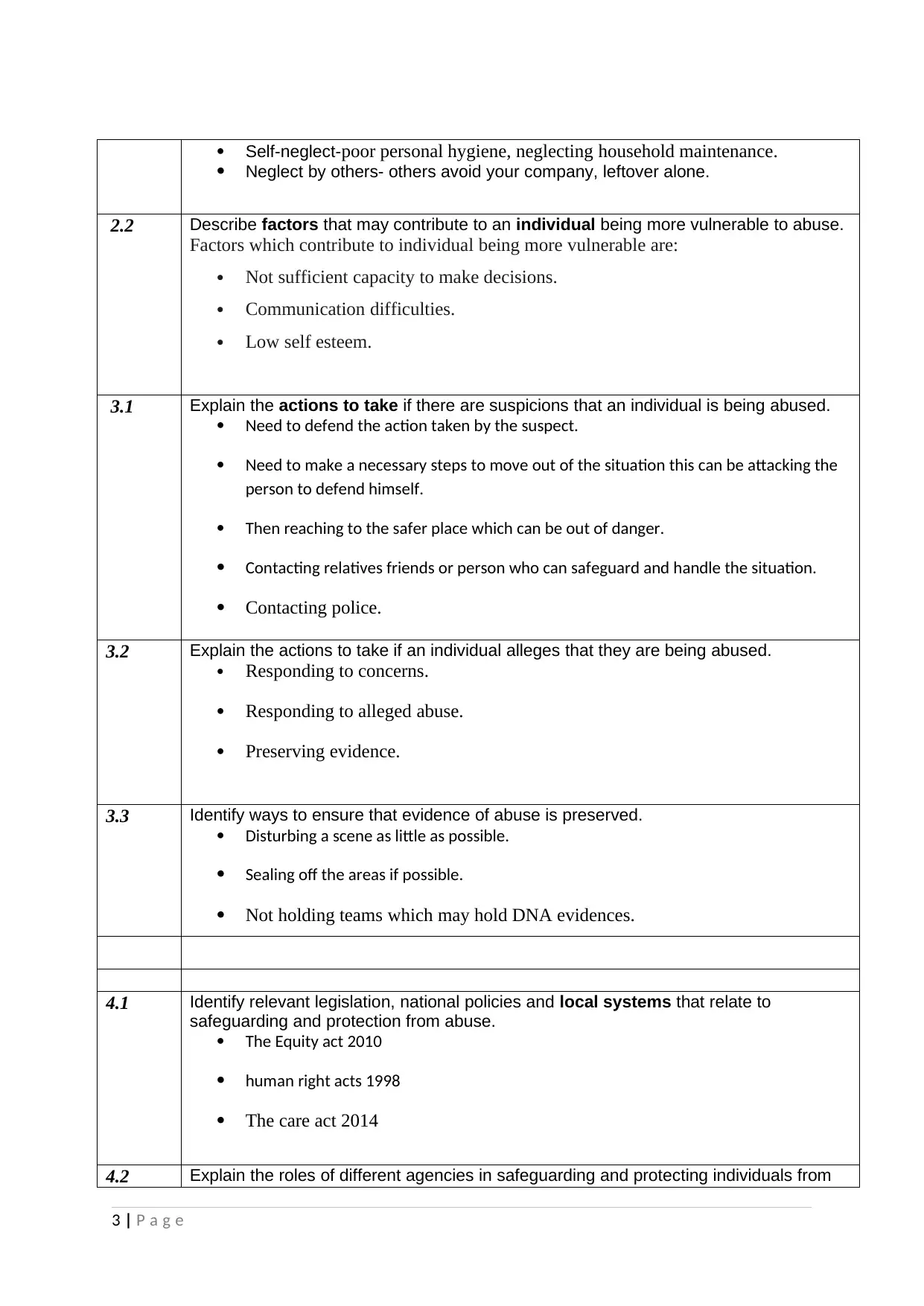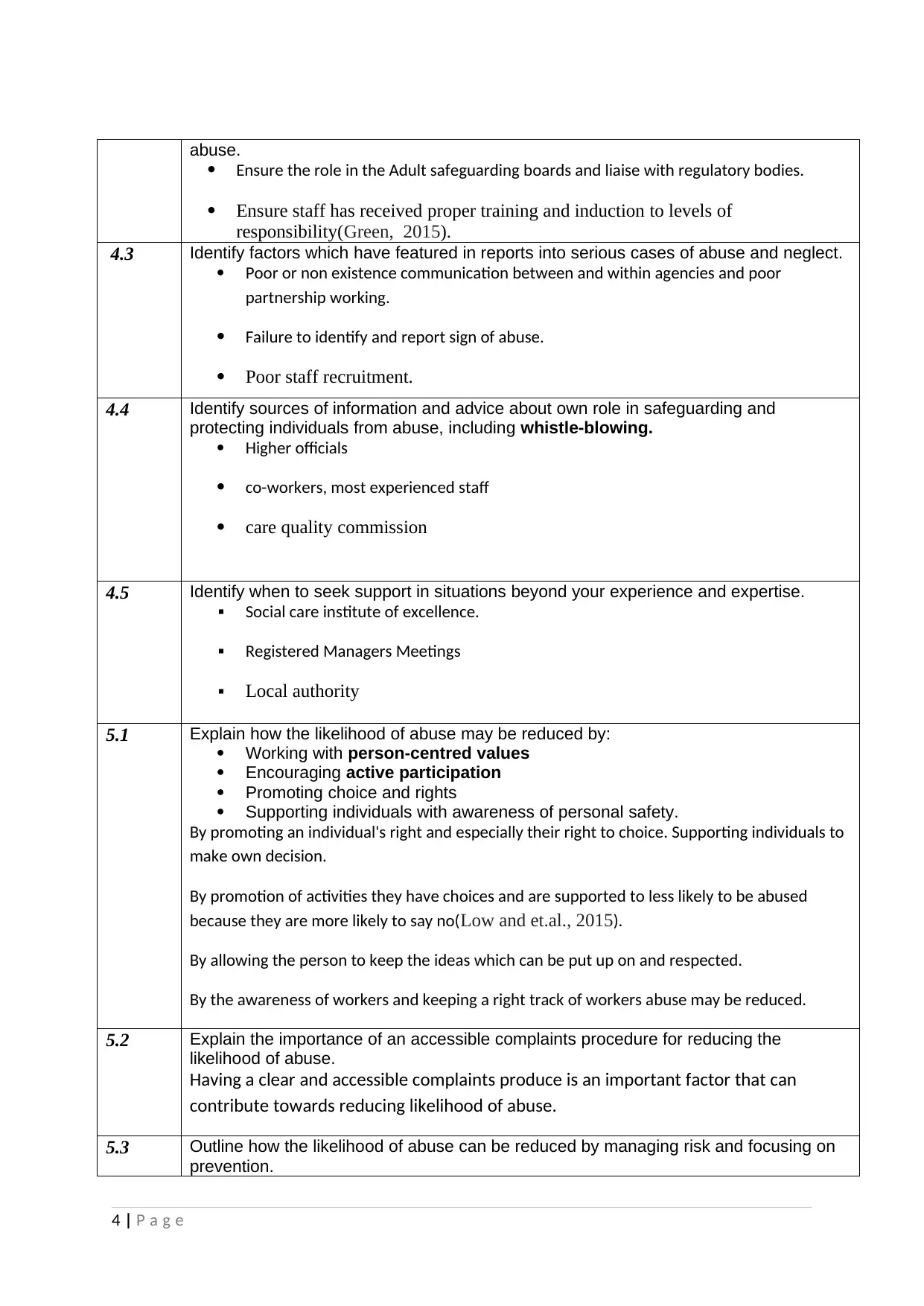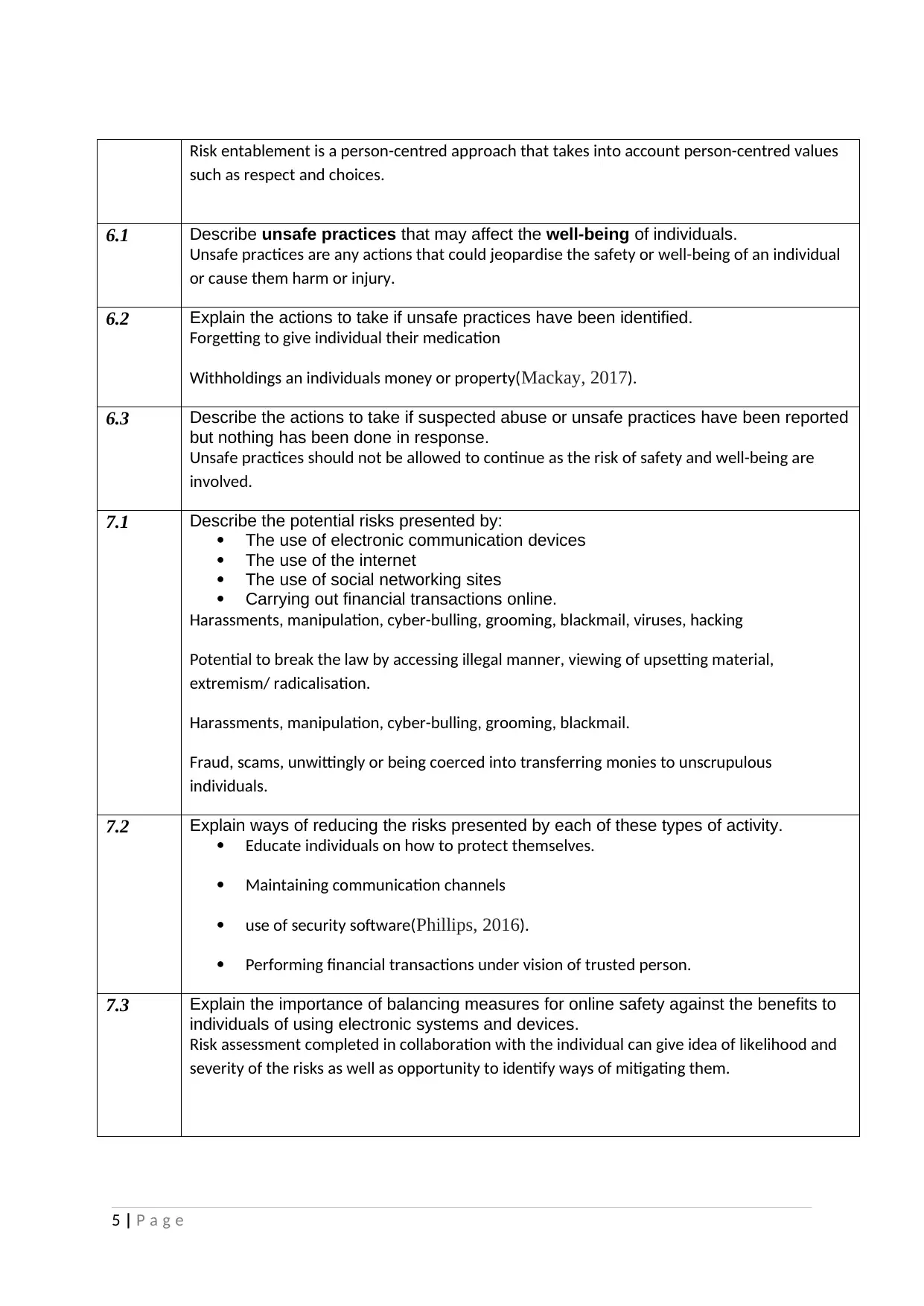This document provides information on safeguarding and protection in care settings. It explains the term 'safeguarding' and the role and responsibilities in safeguarding individuals. It also defines different types of abuse and their signs and symptoms. The document discusses factors that contribute to vulnerability to abuse, actions to take if abuse is suspected or alleged, and ways to preserve evidence. It identifies relevant legislation, national policies, and local systems related to safeguarding. The roles of different agencies in safeguarding and protecting individuals are explained, along with factors featured in reports of abuse and neglect. The document also provides sources of information and advice about safeguarding and protecting individuals, and when to seek support beyond one's expertise. It discusses how the likelihood of abuse can be reduced by working with person-centered values, promoting choice and rights, and supporting personal safety awareness. The importance of an accessible complaints procedure and managing risk for reducing abuse is highlighted. Unsafe practices that may affect individual well-being are described, along with actions to take if unsafe practices are identified or reported but not addressed. The potential risks presented by electronic communication devices, the internet, social networking sites, and online financial transactions are outlined, along with ways to reduce these risks. The importance of balancing measures for online safety against the benefits of using electronic systems and devices is explained.
![[object Object]](/_next/static/media/star-bottom.7253800d.svg)
![[object Object]](/_next/static/media/star-bottom.7253800d.svg)
